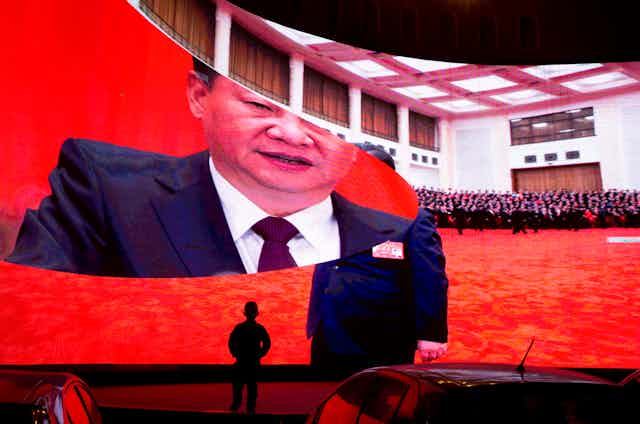Nations around the world should be applauded for continuing to pressure China on its treatment of ethnic minorities in the Xinjiang Uyghur Autonomous Region.
In February 2021, the Canadian House of Commons unanimously endorsed a motion calling the treatment of Uyghurs, a largely Muslim ethnic minority group, genocide. The motion makes Canada just the second country after the United States — which passed the Uyghur Human Rights Policy Act in June 2020 — to overtly signal to China through a legislative procedure that its treatment of Uyghurs is a gross violation of human rights.
It also follows repeated calls by members of the Five Eyes intelligence alliance to end the arbitrary detentions and the mass internment of Uyghurs.
Chinese officials have responded negatively to this pressure, especially in the current environment of increasing nationalism under Xi Jinping. They have repeatedly asserted that the situation in Xinjiang is an “internal matter” that is of no concern to other nations.
The lack of a meaningful two-way dialogue with China over this issue is not surprising. Critics have generally used a rights-based approach to engage with China on its treatment of ethnic minorities. While it’s undoubtedly important to continue a rights-based approach — although its efficacy is debatable — there is an alternative.
Best practices
Other nations could present best/worst practices for dealing with racialized minorities and improving inter-ethnic integration based on their own experiences.
The scholarly evidence suggests ethnic unrest has become a persistent and serious issue in China. Since the early 2000s, it has periodically manifested in outbreaks of violence, from Beijing to Xinjiang, costing the lives of hundreds and injuring thousands. China is currently grappling internally with how to manage ethnic minority unrest.
The Chinese state’s response has been a policy of securitization with the aid of a sophisticated and expensive mass surveillance system. Unlike many other nations, China has erroneously adopted a one-size-fits-all securitization strategy in Xinjiang without appropriate institutional checks and balances.
The end result is crackdowns on core elements of Uyghur identity, including language and religious practices. This has understandably created significant resentment among Uyghurs, and has heightened the group’s ethnic consciousness. Combined with lower socio-economic status compared to the Han Chinese majority, this could lead to increasing radicalization in the future.

Easing discrimination, inequality
Han Chinese and Uyghurs reside in relatively segregated communities in Xinjiang, and rarely have meaningful daily interactions. While contemporary migration patterns have played a role in fostering this situation, it’s also product of economics — the relatively lower-wage Uyghurs and higher-wage Han Chinese live in the communities they can afford, creating geographical divisions and a lack of opportunities for daily contact.
In the absence of meaningful contact, the two groups primarily learn about the other through mass media that often depict Uyghurs negatively, and in some cases as a “dangerous threat.”
The Chinese state should therefore be encouraged to promote positive portrayals of Uyghurs in everyday life in state-controlled mass media.

Socio-economic inequalities in Xinjiang play the biggest role in fomenting ethnic minority unrest.
Although Uyghur wage earnings have increased in the post-market reform era (1978 onwards), they have not comparatively kept pace with Han Chinese. Uyghurs generally have lower-paying jobs in the primary sector in Xinjiang, and have been unable to make significant inroads into higher-paying sectors.
Many of the state’s social policy interventions, while improving Uyghur’s wage earnings, have in fact exacerbated the relative socio-economic divide between Han Chinese and Uyghurs. The primary beneficiary of state initiatives to develop Xinjiang, in fact, has been the Han Chinese population.
Will China abandon its policies?
Given the mixed results of economic development strategies for Uyghurs in Xinjiang, there is a serious risk that China will abandon its affirmative action policies aimed at improving socioeconomic outcomes for ethnic groups.
The overwhelming evidence from other multi-ethnic states suggests this is a mistake. Improving the socio-economic conditions of Uyghurs should continue to be a priority, not only for the economic development of the region, but to reduce the potential for ethnic tensions to escalate.
The most significant changes that Chinese authorities can make in their management of Uyghurs is how they perceive them. Instead of viewing Uyghur identity as a threat requiring extensive control, Chinese authorities should target the main root causes of Uyghur unrest.
Engaging China in the future
Nations, in turn, that are concerned about the treatment of Uyghurs in Xinjiang should engage with the Chinese state, at the ministerial level and above, by offering their own experiences and lessons learned about integrating ethnic groups. They can offer advice about the potential strategies that worked, and those that weren’t successful, to reduce unrest.
Chinese senior officials are well aware of the difficulties other countries encounter with integrating ethno-racialized communities, from ethnic fracturing in the former Soviet Union to Black Lives Matter protests in the U.S. A Chinese official even accused the U.S. of the slaughter of Black people at a recent bilateral meeting in Alaska.
Optimistically, this suggests that there is some common ground between China and other countries on domestic turmoil and ethnic unrest. Perhaps this can help foster a meaningful state-to-state dialogue on the treatment of Uyghurs in Xinjiang.

